This game covered the second prong of the British attack. Overnight the 5th Dorsetshire had advanced to the wood, the edge of which is just visible below at the top of the map. At 0800 18 June, a massive rolling bombardment began, and the infantry advanced behind it. The British had four rifle companies available immediately, with more infantry and armour available to exploit a breakthrough.
Rolling artillery barrage rules
British forces sometimes used their artillery in a ‘creeping’ line directly in front of an infantry advance. The rolling barrage is allocated by the C-in-C, and is not available as a firing option for in-game FOs. Often the following infantry struggled to keep up with the barrage and the suppressed Germans had time to recover before being attacked.
Stretch a piece of string across the table. It advances 3” inches (or as specified in the scenario) at the beginning of each German initiative and any elements it crosses is hit. Each element, is only hit in the first turn it is touched by the line. Hidden elements are hit when the barrage first touches the cover they are hidden in. Roll 3d6 for each element (reduced by 1d6 if they have cover for Indirect fire). If the unit is hidden then the owning player can do this in secret, and might want to roll some ‘dummy’ dice when the barrage moves across empty features to avoid their opponent guessing too easily where hidden troops are.
The German line was mostly held by Green troops from the 3-857 “coastal” battalion – a low quality unit that had already suffered casualties in its retreat from the coast. These started to take significant casualties as the bombardment passed over them. They started with an ineffectual ambush on the advancing British and were then rapidly battered by the artillery.
A contemporary account of one of these barrages (at the start of Operation Epsom) by SS-Standartenfuhrer Kurt Meyer gives an idea of how heavy it was:
“The earth seemed to open and gobble us all up. All hell had been let loose. I lay in a roadside ditch listening to the noise of battle. There was no let up to the artillery barrage. All telephone lines had been destroyed and communications with Divisional Headquarters and units at the front no longer existed…My ears tried unsuccessfully to analyze the sounds of battle and all I heard was the permanent spitting, cracking and booming of the bursting shells, mixed with the noise of tank tracks.”
Fearing a collapse, the German player immediately called for Pz IVs which were waiting in reserve to the south. Luckily they responded quickly and raced up the dirt road.
The Germans also had some Veterans of the 2/2 Panzer Grenadiers who were mostly stationed in Hottot, to the east of the battlefield. These had only just moved to reinforce, so were not hidden at the start of the game. Below is a shot of the table – the British, with four companies in their lead battalion, are attacking across a broad front.
The Pz IVs can be seen at the crossroads on the right hand side, having just driven up the brown road. With the tanks and the veteran troops on the east side, the Germans pushed forward slightly, trying to relieve the pressure on their weaker comrades. The British were reluctant to engage 2/2 PzGr, especially once the tanks arrived to support them. 2/2 did lose a single rifle squad and a platoon commander to fire from a British 25 pdr, but suffered no casualties apart from that.
3-857 Company B was furthest west and got the worst of it, suffering heavy casualties mostly to artillery (rolling or otherwise), and a couple of close combats from the British. 3-857 company C fared better, but still took some tough losses.
The moving clock was being used. After about three hours of real life play, and about two hours of actual game time, the game had to finish, leaving the troops as in the photo below.
The extent of the British advance can be seen as marked by the red line on the map below. The British had taken extremely light casualties – only one rifle squad, the Germans had lost about ten – mostly Green.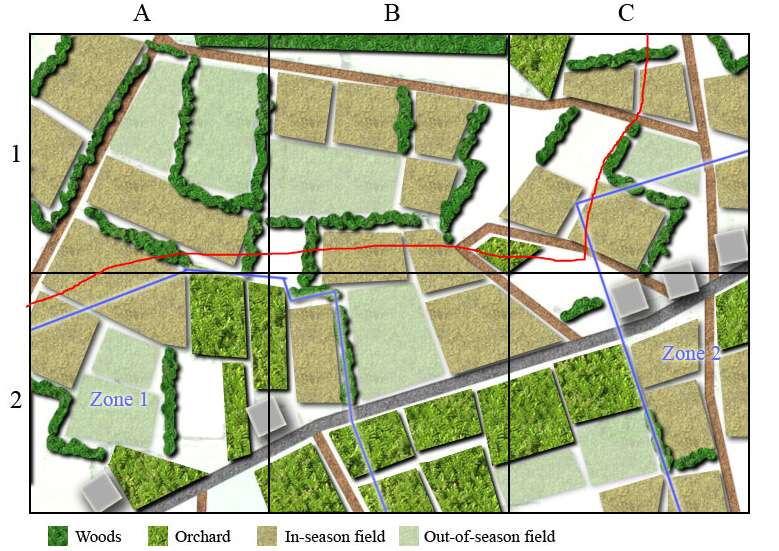
As the battle had only reached about 10 30 in game time, and both sides had plenty of troops left, it was decided to fight the rest of the day as Battle 4 (report to follow).


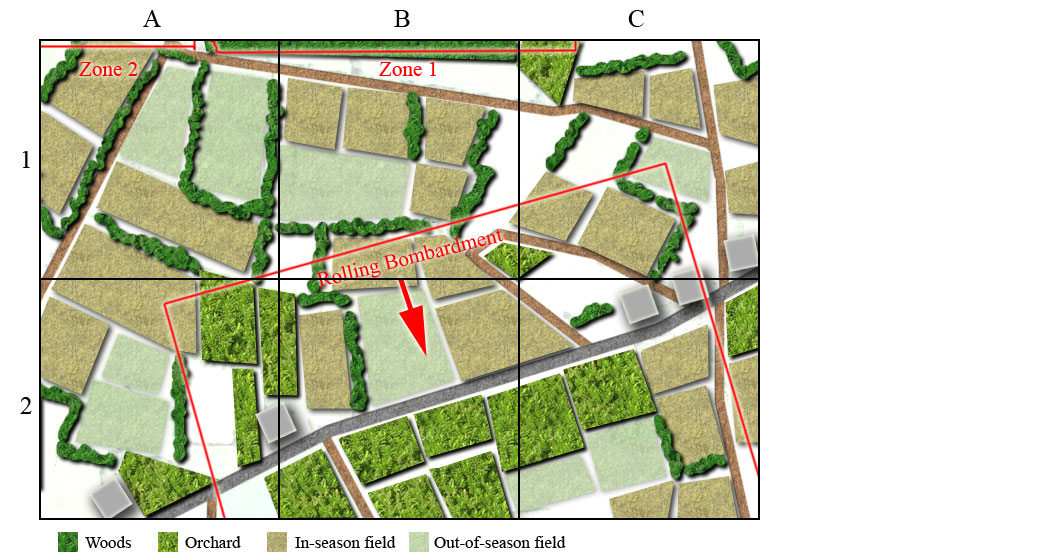
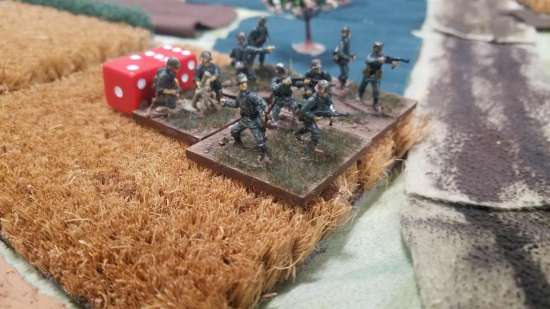
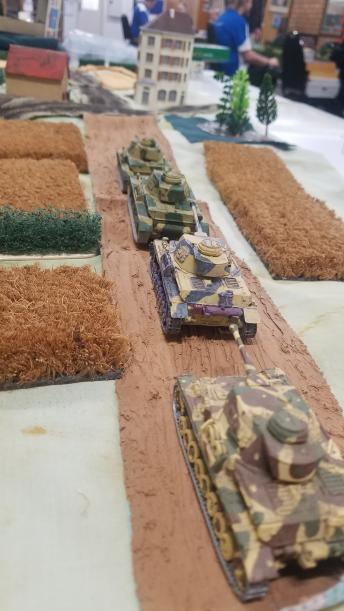
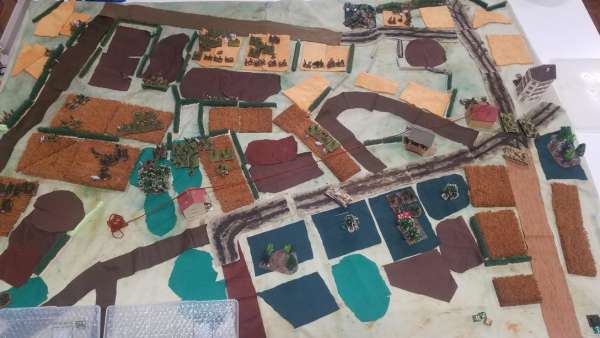
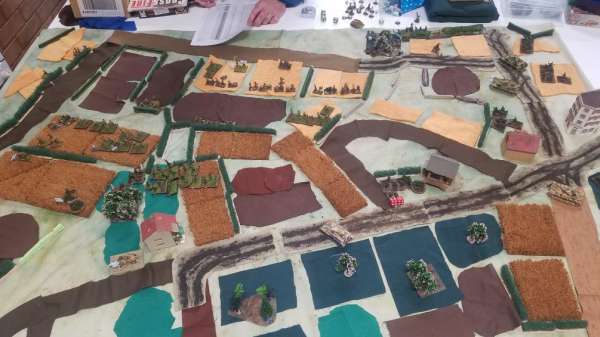

Nice report. I like the German use of reserves. They clearing had a big impact on British thinking.